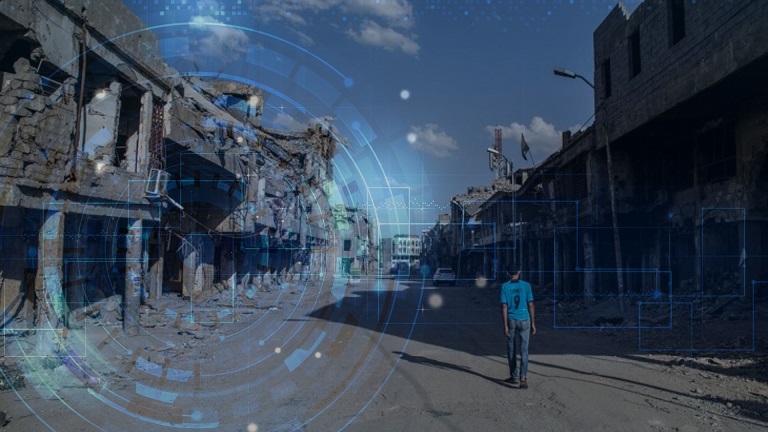Are Tech Companies Responsible When Algorithms Contribute To Mass Violence?

Table of Contents
The Role of Algorithms in Spreading Hate Speech and Misinformation
Algorithms, at their core, are designed to optimize user engagement. This often translates to prioritizing sensational content, regardless of its veracity or potential for harm. This inherent bias creates a dangerous environment where algorithms contribute to mass violence by amplifying extremist content and facilitating targeted misinformation campaigns.
Amplification of Extremist Content
The relentless pursuit of engagement often leads algorithms to promote extremist views and conspiracy theories. This creates filter bubbles and echo chambers, reinforcing pre-existing biases and radicalizing users.
- Examples: The spread of anti-vaccine misinformation leading to outbreaks, the amplification of white supremacist ideologies on various platforms, and the promotion of conspiracy theories linked to real-world violence.
- The Filter Bubble Effect: Algorithms personalize content, showing users more of what they already engage with, limiting exposure to diverse viewpoints and fostering polarization.
- Echo Chambers: Users are primarily exposed to information confirming their existing beliefs, leading to the reinforcement of extreme views and a decreased tolerance for opposing perspectives. This can easily contribute to a climate ripe for violence.
- Specific Cases: The role of algorithms in the spread of extremist propaganda before the Christchurch mosque shootings and the Capitol riot are stark examples of how algorithmic amplification can have devastating real-world consequences. Research consistently points to the correlation between exposure to such content and increased radicalization.
Targeted Misinformation Campaigns
Sophisticated algorithms can be weaponized to target specific demographics with tailored misinformation campaigns designed to incite violence or hatred. These campaigns often utilize bots and fake accounts to spread disinformation at scale, making it difficult to identify the source and counteract their influence.
- Examples: Coordinated disinformation campaigns during elections, the spread of rumors and false accusations designed to incite violence against particular groups, and the use of deepfakes to create fabricated evidence.
- Bots and Fake Accounts: Automated accounts and fake profiles are used to amplify harmful narratives and manipulate public opinion, making detection and mitigation exceedingly challenging.
- Challenges in Combating Misinformation: The speed and scale at which misinformation spreads online far surpasses the ability of human moderators to effectively counter it. This necessitates proactive measures by tech companies to identify and remove harmful content.
- Tech Company Responsibility: The capacity of these technologies to spread misinformation and facilitate harm necessitates a greater degree of corporate responsibility and proactive measures to prevent their misuse.
Ethical Considerations and Corporate Social Responsibility
The challenge of balancing free speech with public safety creates a profound ethical dilemma for tech companies. While protecting free expression is crucial, the potential for algorithms to contribute to mass violence necessitates a careful consideration of corporate social responsibility.
Balancing Free Speech with Public Safety
The debate surrounding content moderation is complex. Stricter regulations could curtail free speech, while a laissez-faire approach risks amplifying harmful content and fueling violence. Transparency in algorithmic design is paramount to fostering trust and accountability.
- Arguments for Stricter Content Moderation: Prioritizing public safety necessitates proactive measures to identify and remove harmful content, even if it means limiting free speech in some instances.
- Arguments Against Stricter Content Moderation: Concerns exist about potential censorship and the subjective nature of defining "harmful" content.
- Importance of Transparency: Openness regarding algorithmic design and decision-making processes allows for greater scrutiny and promotes accountability.
Corporate Responsibility and Accountability
Tech companies have a moral and ethical obligation to prevent their algorithms from being used to cause harm. This requires a commitment to greater corporate accountability and the implementation of robust ethical guidelines in algorithm design.
- The Argument for Greater Accountability: Tech companies should be held responsible for the foreseeable consequences of their algorithms, including the potential for violence.
- Need for Ethical Guidelines: Developing and implementing comprehensive ethical guidelines for algorithm design is essential to mitigate the risks associated with algorithmic bias and manipulation.
- The Role of Independent Audits: Independent audits of algorithms can help identify potential biases and vulnerabilities that could contribute to the spread of harmful content.
Legal Frameworks and Potential Liabilities
Existing legal frameworks often struggle to keep pace with the rapid evolution of technology, leaving significant gaps in addressing algorithmic-driven violence. This creates uncertainty regarding the potential legal liabilities faced by tech companies.
Existing Laws and Regulations
Current legislation, such as Section 230 in the US, offers some protections but struggles to adequately address the complexities of algorithmic amplification of harmful content. Enforcing these laws within the rapidly evolving technological landscape presents further challenges.
- Examples of Relevant Legislation: Laws addressing hate speech, defamation, and incitement to violence vary significantly across jurisdictions, often failing to adequately address the unique challenges posed by algorithms.
- Challenges of Enforcement: Identifying the source of harmful content, proving causality between algorithms and violence, and determining the appropriate level of responsibility for tech companies are significant obstacles to effective enforcement.
Potential for Legal Action Against Tech Companies
The potential for legal action against tech companies for their role in algorithmic-driven violence is increasing. While proving causality remains a challenge, arguments are mounting that tech companies should be held accountable for the foreseeable consequences of their algorithms.
- Arguments for Holding Tech Companies Accountable: The argument centers on the idea that tech companies have a duty of care to prevent their platforms from being used to cause harm.
- Difficulties in Proving Causality: Establishing a direct causal link between an algorithm and an act of violence is incredibly difficult, requiring complex evidence and expert testimony.
- Potential Legal Strategies: Legal strategies may focus on negligence, product liability, or violations of human rights laws.
Conclusion
The question of whether tech companies are responsible when algorithms contribute to mass violence is a critical and evolving one. Algorithms, designed to maximize engagement, inadvertently amplify extremist content and facilitate the spread of misinformation, potentially leading to real-world violence. Ethical considerations demand that tech companies prioritize public safety while respecting free speech. Current legal frameworks struggle to keep pace with technological advancements, creating a need for updated legislation and stronger corporate accountability. The urgent need for discussion, regulation, and corporate responsibility in addressing the issue of algorithms contributing to mass violence cannot be overstated. We need a concerted effort from policymakers, tech companies, and researchers to develop effective solutions and prevent future tragedies fueled by algorithmic bias and manipulation. The responsibility for mitigating the harmful effects of algorithms contributing to mass violence rests not just on tech companies, but on society as a whole.

Featured Posts
-
 Death Of Baylor Football Player Alex Foster Prompts City Curfew
May 30, 2025
Death Of Baylor Football Player Alex Foster Prompts City Curfew
May 30, 2025 -
 Experiencia Pop Up Store Bts Todo Lo Que Necesitas Saber Fechas Ubicacion Acceso
May 30, 2025
Experiencia Pop Up Store Bts Todo Lo Que Necesitas Saber Fechas Ubicacion Acceso
May 30, 2025 -
 Death Bath Uncovering The Horrific Methods Of A Serial Killer
May 30, 2025
Death Bath Uncovering The Horrific Methods Of A Serial Killer
May 30, 2025 -
 Shtormovoe Preduprezhdenie Mada Podgotovka K Ekstremalnym Pogodnym Usloviyam V Izraile
May 30, 2025
Shtormovoe Preduprezhdenie Mada Podgotovka K Ekstremalnym Pogodnym Usloviyam V Izraile
May 30, 2025 -
 Ruben Amorims Concerns A Manchester United Players Future In Doubt
May 30, 2025
Ruben Amorims Concerns A Manchester United Players Future In Doubt
May 30, 2025
